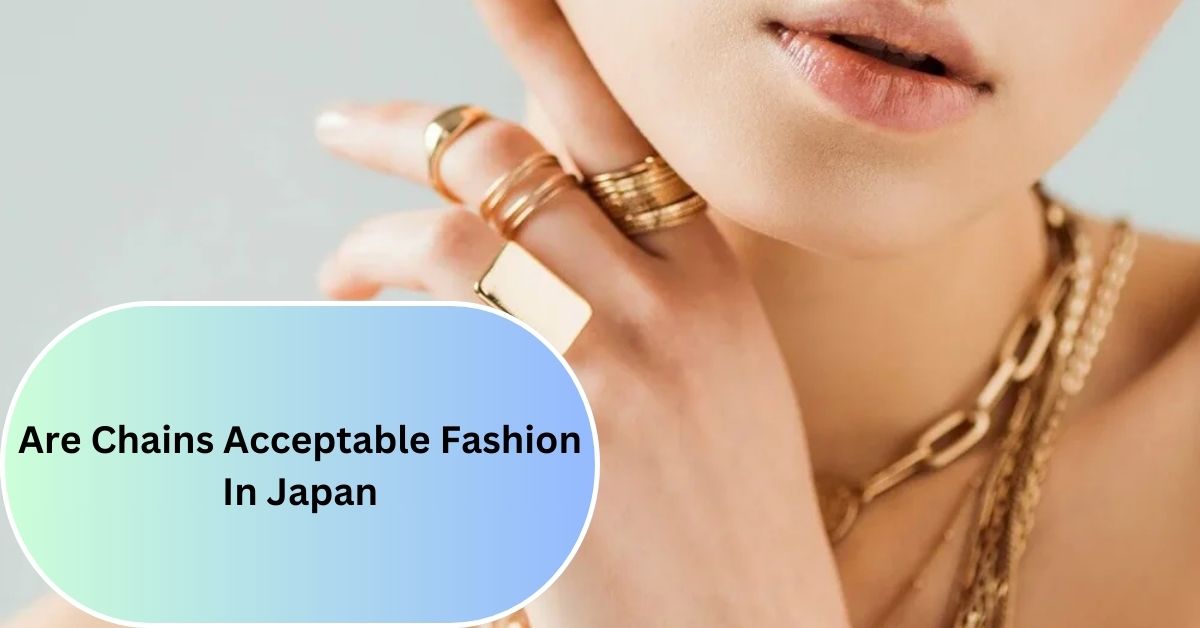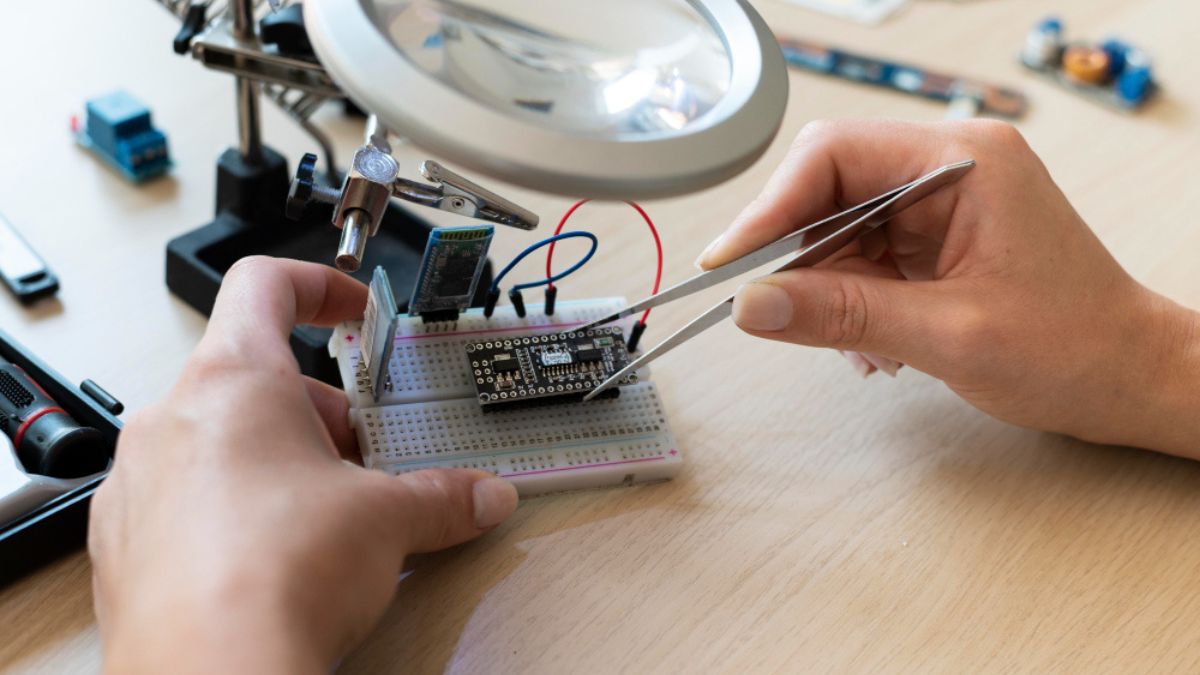Japanese fashion is a mix of old traditions and new trends. It is both a respect for heritage, like the kimono, and an experimentation with streetwear and contemporary styles. This is a balance of the old and the new in Japan’s cultural approach.
Yes, chains have their acceptance in the streets of Japan, especially its major urban districts like Harajuku and Shibuya. Chains are commonly found acceptable in Japan’s street fashion, especially in these urban districts, though generally not suitable for official or traditional settings.
Chains are becoming an integral part of fashion in Japan. They are especially accepted in streetwear, where they symbolize rebellion and self-expression. However, their use is everyday. Chains are often considered out of place in more formal or traditional settings.
Context is key when deciding whether to wear chains. They are a bold, fashionable choice in casual or creative environments, but in more reserved settings, they may need to fit the expected norms.
Table of Contents
The Rise Of Chains In Japanese Fashion:
The Global Influence Of Chains In Japanese Fashion:
Chains became popular in Japan through Western streetwear. Cultures like hip-hop and punk helped bring them into fashion. These styles made chains a symbol of rebellion. Over time, they became part of the mainstream. Chains added a new layer to urban fashion in Japan.
Youth Adoption Of Chains:
Today, over 70% of Japanese youth sport chains. Chains are part of their self-expression about the style. They do chain to be able to individualize. Necklaces and bracelets and other similar wearables are very much into use. Chains form the most essential part of their personal dressing.
Chains In Urban Fashion Hubs:
Harajuku and Shibuya are the fashion districts of Japan. These places are very bold and experimental in their fashion. Chains are a common accessory in these places. They are used as a statement of fashion. Streetwear in these districts thrives on new trends, and chains are a big part of it.
Popular Chain Accessories In Japan:
Chains are worn in many forms. Necklaces and bracelets are used every day. Belt chains are also gaining popularity. Some chains are even built into clothing. These accessories give outfits a rough, edgy feel. They add depth and contrast to a look.
Chains As Symbols Of Rebellion And Self-Expression In Japan:
Chains As Symbols Of Rebellion And Self-Expression In Japan:
Chains are a symbol of rebellion and individuality in Japan. They show a desire to break free from tradition. For many, chains are a way to stand out and express their unique personality. They represent a bold fashion choice that speaks to personal freedom.
Chains In Street Fashion:
Chains are often paired with soft fabrics or muted tones to create contrast. This combination gives the outfit an edgy feel. The roughness of chains against smooth materials makes a bold statement. It adds energy to the overall look without overwhelming it. Chains bring texture and depth to simple, understated outfits.
Influence From Fashion Subcultures:
Punk, hip-hop, and skate cultures have shaped how chains are worn. These styles emphasize breaking the rules and standing out. These subcultures significantly influence young people. Chains have become a visual cue of rebellion, a nod to the spirit of these movements in global fashion.
Balancing Style With Restraint:
As one should in Japanese fashion, it’s the balance that makes wearing chains interesting. Never overdo the outfit. One or two should be sufficient to make an impact without overpowering. The objective is to remain clean while giving just enough edge.
The Cultural And Historical Context Of Chains In Japan:
Chains in Japan have a deep historical background, starting with their use in samurai armor. Initially, they were functional, protecting in battle. The chains also had social significance. They were worn as signs of status, and only those with wealth could afford such intricate details.
In the Edo period, chains became less functional and more ornament. They were part of the traditional clothing, used more frequently to hold netsuke.
Netsuke are small carvings attached to the kimono. These chains made personal statements and displayed excellent craftsmanship. They were both beautiful and practical, reflecting the beauty appreciation in Japanese culture.
The Meiji Restoration marked the beginning of the acceptance of Western influence by Japan. Chains started to lose their utility. It was more of an aesthetic tool than a practical one. The use shifted from functionality to its visual appeal.
Today, chains are worn as bold fashion statements. They are no longer extended tools but accessories. Chains now symbolize self-expression and individuality in streetwear. This modern use shows how chains have evolved, from a symbol of status to a key part of contemporary Japanese style.
Chains In Formal And Traditional Settings:
Formality And Tradition:
In Japan, formal and traditional events require a minimalist approach. Weddings, ceremonies, and corporate events all call for elegance minus excess. The attire is clean and simple. Accessories, such as chains, are too bold. The focus here is on refined understatement.
Traditional Fashion:
Chains are rarely seen in traditional attire like kimonos and hakama. These garments are designed to be simple, with the fabric and colors taking center stage. Adding chains would disrupt the balance of the outfit. The tradition values subtlety and harmony, so accessories are minimal.
Generational Differences:
Older generations often view chains as inappropriate for formal settings. They associate them with casual or rebellious styles. However, younger generations are more open to wearing chains in less formal settings. They see them as a way to express individuality, even in semi-formal contexts.
Are Chains Acceptable In Japan?
Yes:
Chains have been a popular fashion street wear trend in Japan, particularly among Harajuku and Shibuya. They are worn by people who want to draw attention to their clothes. In this context, chains symbolize self-expression in creative streetwear.
No:
In formal or traditional settings, chains are still considered misplaced. For instance, weddings and corporate meetings require a classy, subtle look. The flashy appearance of chains is inappropriate for such events, as the message they try to convey is too loud and does not add simplicity.
Context Matters:
The acceptability of chains varies depending on the setting. For casual, experimental looks, chains work well. However, they don’t fit in professional or traditional environments. Considering the context and overall vibe before wearing chains is essential.
Final Views:
Chains are now very common in Japanese fashion, especially in the urban environment. They are symbols of individuality and style for those in places like Harajuku and Shibuya. Youngsters use these chains as a way to express themselves. It’s a statement that reflects global influence in street fashion and a desire to stand out.
However, chains are still viewed as out of place in more formal settings. At events like weddings and corporate gatherings, the emphasis is on restraint and simplicity. Here, chains can be seen as too bold or flashy. The cultural expectation for subtlety in these environments often conflicts with the statement chains make.
Ultimately, the acceptability of chains depends on the context. They are perfect for casual, creative, and experimental styles. Yet, for more formal or traditional occasions, they should be avoided. Understanding when to wear them is key to respecting cultural norms while making bold fashion choices.





